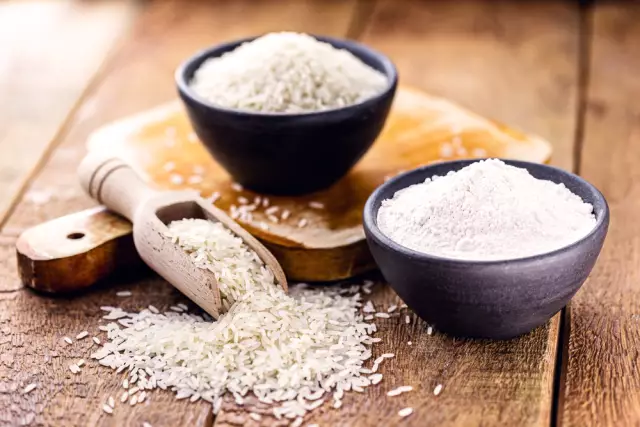- Author Rachel Wainwright [email protected].
- Public 2023-12-15 07:39.
- Last modified 2025-11-02 20:14.
Soy flour

Soy flour is a product obtained from processed soybean seeds (soybeans), oilcake and meal. Soy flour dishes are especially popular in the regions of East Asia.
The production of soy flour is carried out as follows: soybean grains are dried and coarsely crushed, removing the shells and seed germs that contribute to the rapid rancidity of flour. After the completion of the preparatory operations, the soybeans are grinded more finely in a roller or mill mill.
Soy flour, the least refined product of all soy products consumed by humans, serves as a source of fiber that cleanses the human intestine of toxins. It contains up to 54% protein, thanks to which it can replace proteins of fish, meat, poultry and milk, leading to a decrease in the price of the final product.
Depending on the variety and method of production, soy flour can have different shades: from pure white, cream, light yellow to bright orange.
The shells (husks) remaining after the technological process are used as a source of nutritional dietary fiber in bakery industries, as well as as animal feed.
Soy flour composition
The beneficial properties of the product are determined by the chemical composition of soy flour. It includes such trace elements as calcium (212 mg), sodium (5 mg), magnesium (145 mg), phosphorus (198 mg), potassium (1600 mg), as well as vitamin PP (2.3 mg), vitamin A (3 μg), beta-carotene (0.02 mg), B vitamins (thiamine and riboflavin), vitamin E (1 mg). Soy flour also contains iron (9.2 mg).
The calorie content of the product is 291 kcal / 100 grams. Nutritional value of soy flour:
- Proteins - 48.9 g;
- Fat - 1 g;
- Carbohydrates - 21.7 g
After adding soy flour to the food product, the final product boasts a higher content of minerals, proteins, lecithin and vitamins, positively affecting the concentration of "bad" cholesterol in the blood.
Vitamin B4, which is part of soy flour, prevents the formation of gallstones, restores normal fat metabolism, thus contributing to natural weight loss.
Soy flour application

Soy flour is widely used in the food industry: it reduces the need for additional raw materials (and, consequently, the cost of production), the loss of product weight during heat treatment, while maintaining its quality at an appropriate level.
Soy flour is used in the production of sausages, breakfast cereals, biscuits, semi-finished products, bread, pasta, cereals, and also as a substitute for skimmed milk powder and some substances in whole milk.
Soy flour harm
Despite the numerous properties useful for the human body, the use of soy flour in food has its own contraindications. Isoflavones, which are part of soy flour, are substitutes for female sex hormones that have a positive effect on the female reproductive system, negatively affect the development of the fetal brain during pregnancy, increasing the risk of miscarriage. In addition, research by scientists has identified a relationship between excessive consumption of soy products and menstrual irregularities in women of reproductive age.
Abuse of foods containing soy flour can cause cerebrovascular accident, provoke the appearance of Alzheimer's disease, and accelerate the aging process. The harm of soy flour also spreads to the endocrine system, causing disorders of the immune system, the nervous and reproductive systems of a person.
Excessive consumption of soy flour products is not recommended for children under 3 years old - the product can provoke thyroid diseases and allergic reactions.
Found a mistake in the text? Select it and press Ctrl + Enter.






